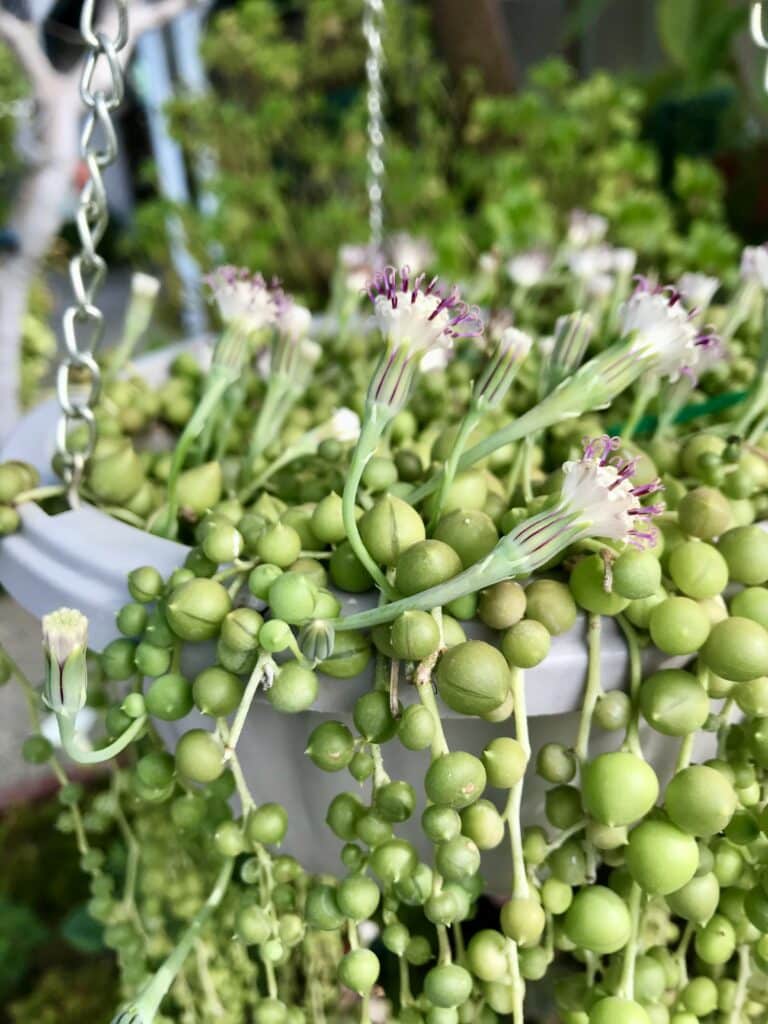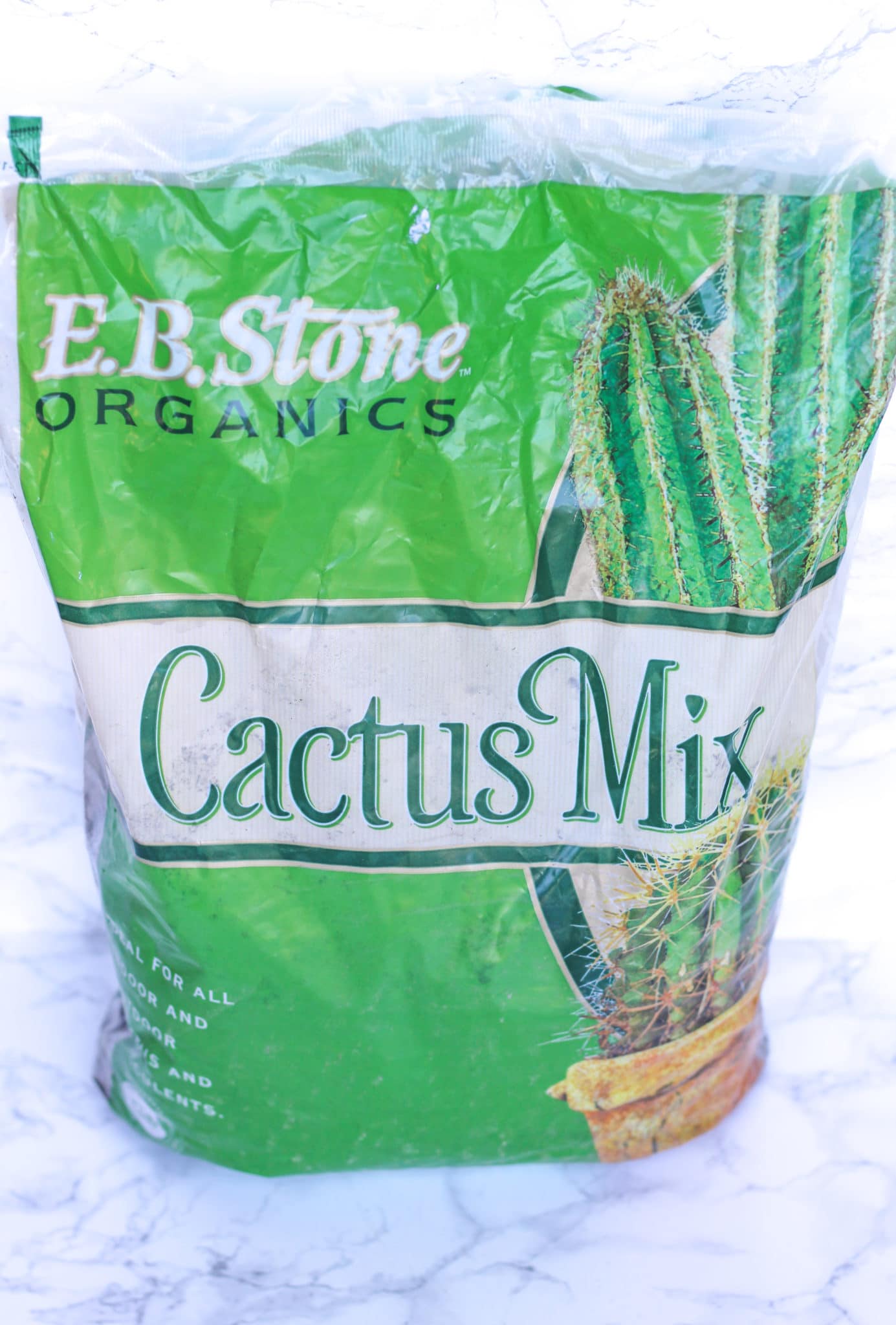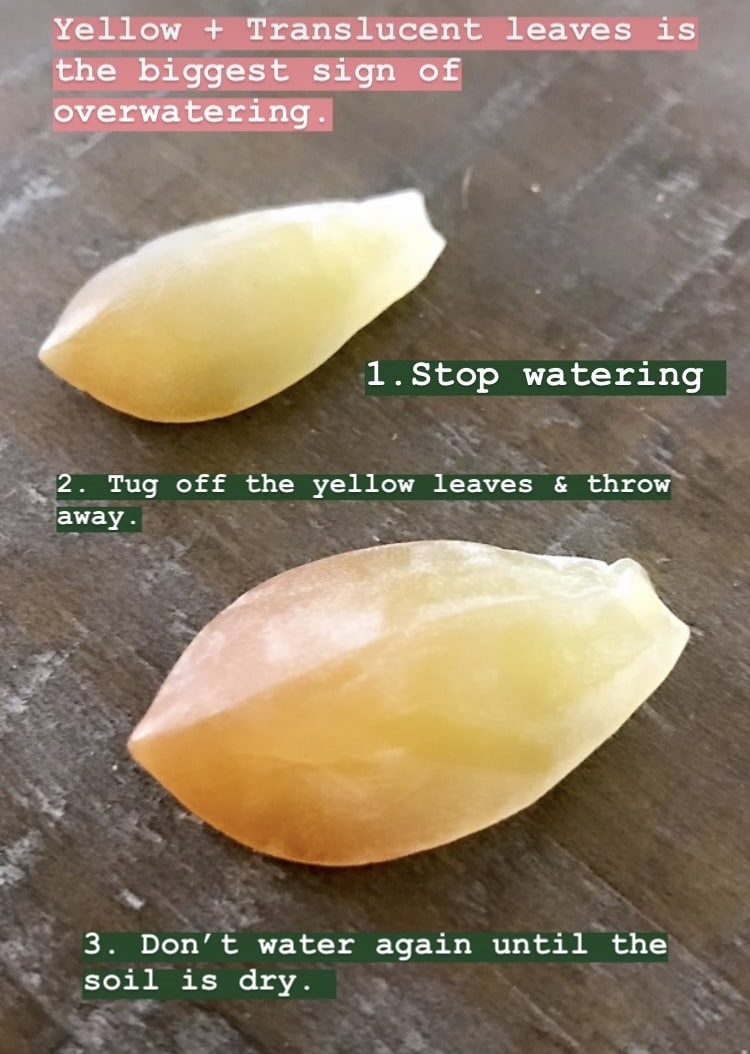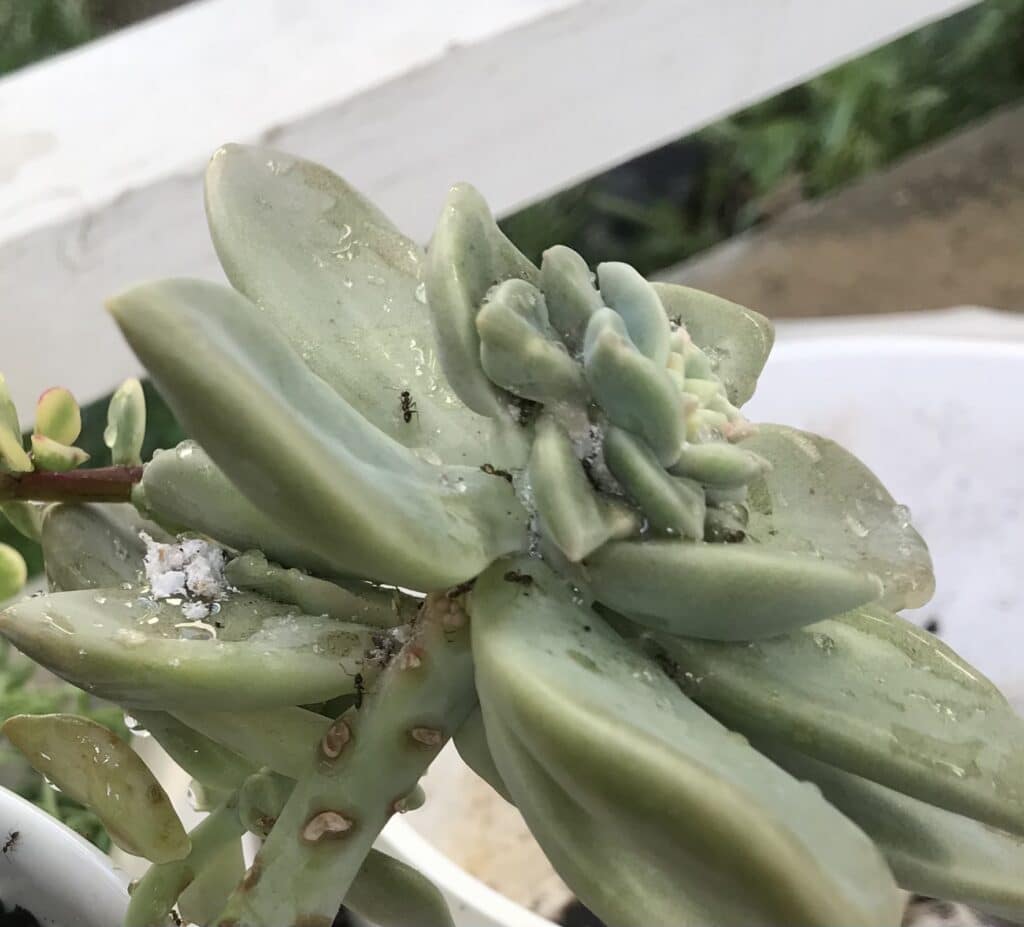How to Care for String of Pearls Succulent: Tips and Tricks
If you’re searching for a stunning and timeless plant to keep in your home, consider string of pearls!
This delicate succulent is famous for its long, trailing stems that feature small, bead-like leaves that resemble pearls.
It’s a beautiful, low-maintenance, drought-tolerant plant that is perfect for beginners and houseplant lovers.

To ensure your string of pearls is healthy and continues to thrive, however, you need to provide it with the right growing conditions.
These conditions include lots of bright, indirect sunlight, well-draining soil, and the occasional watering.
Over-watering can be a common issue with this plant, so it’s important to let the soil dry out completely between waterings.
With proper care, this plant will stay beautiful for many years!
Understanding String of Pearls
Species Overview
String of Pearls (Senecio rowleyanus) is native to South Africa but it’s a very popular succulent worldwide.
It belongs to the Asteraceae family, which encompasses more than 1,600 species of flowering plants. It’s one of the most popular string succulents.
The plant grows thin, delicate stems up to 3 feet long that produce small, fragrant white flowers, usually in late winter. It’s a sight to see!
Growth Habits
String of Pearls is a plant that grows slowly and can extend up to three feet in length. Like many succulent, it takes time to grow!
This succulent prefers a temperature range between 60°F and 85°F. The plant requires bright and indirect light to flourish.
Soft, indirect light is best. Strong and direct sunlight, especially in the summer, can quickly burn the leaves.
Optimal Growing Environment
Light Requirements
This plant must receive sufficient indirect sunlight. Without it, the plant won’t look its best.
For optimal growth, a string of pearls plants requires bright and indirect light.
It does well with direct sunlight in the morning when the sun is gentler. In the afternoon, filtered sunlight is recommended.
Again, never leave it out in direct sunlight during the summer months, as the light is far too harsh and can sunburn the beads and stems.
Temperature and Humidity
String of pearls prefer tepid temperatures, making them such an excellent indoor plant.
The best temp for them ranges between 65 to 80 degrees Fahrenheit. It prefers a dry environment and can tolerate low humidity levels.
However, it is essential to avoid exposing this succulent to extreme temperatures and drafts as they can cause damage to the plant.
Soil and Potting Mix
String of pearls plants thrive in fast-draining soil with a neutral to acidic pH – just like other succulents.
Choosing a good soil mix made explicitly for cacti and succulents can make your life much easier if you tend to overwater your plants!
Cactus mix provides better drainage than regular potting soil, which is made to retain water.

Proper drainage is so important here because it can help prevent the effects of overwatering, which is why planting in a pot with a drainage hole is also highly recommended.
If you’re repotting a new plant, choose a container slightly larger than the root ball to prevent plant shock and promote root growth.
Remember that if you want your string of pearls plant to grow well, you should provide it with bright, indirect light, a dry environment, and a soil mix that drains well.
Watering Techniques
Watering Schedule
String of pearls is a trailing succulent that stores water in its leaves.
It’s what helps make it so drought-tolerant.
For best results, water your string of perals plant when the soil inside the post is completely dry. This will probably be around every one to two weeks, depending on the temperature in your home and whether the ac unit or heater dries out the soil quickly.
If growing this succulent outdoors, it’ll need to be watered more often, especially in the hotter months.
You may use either the soaking method or the bottom watering method. I prefer the soaking method; I find it much faster and easier.
The soaking method entails watering the soil directly until the excess water runs out of the drainage holes.
Bottom-watering involves placing the pot in a container filled with water and then allowing the soil to absorb the water from the bottom up.
In summer, the plant goes into dormancy, and its watering needs will change. Water the plant about once a month during this period.
Signs of Overwatering
Overwatering is a common problem with string of pearls. Signs of overwatering are easily to spot: yellowing leaves, mushy leaves, soft stems, rot, and fungus gnats.

To remedy the problem before it gets further out of hand, stop watering immediately and let soil dry out completely.
Discard any mushy leaves or stems.
Only water again once ALL of the soil is bone-dry.
Maintenance and Care
Taking care of a string of pearls plant is relatively simple, but it requires regular maintenance to keep it healthy and happy. Here are some tips for fertilizing, pruning, and repotting.
Fertilizing
String of pearls plants do not require frequent fertilization and you can even skip it altogether, but a small amount can help maintain its health and even help it grow a little faster.
You can use a succulent liquid fertilizer once a month during the growing season (winter) to provide your plant with some extra nutrients.
Dilute the fertilizer to half-strength before applying it to your plant.
When adding fertilizer, always water your plant first before you apply the liquid fertilizer solution to the soil. Applying fertilizer to dry soil can burn the root system.
Pruning
Regular pruning is an important part of taking care of your string of pearls plant, especially if you want it to look vibrant and fresh.
It encourages new growth.
You can trim any long, straggly stems and remove dead, brown, or yellow beads.
To prune, grab a clean and sharp pair of garden scissors or pruning shears. Always sterilize your tools before and after use!
Make sure to make clean cuts when removing stems.
Repotting
String of Pearls plant doesn’t require frequent repotting, but it’s wise to check the roots once a year. You don’t want your plant to be root-bound!
If the roots appear crowded or the soil is compacted, it’s time to repot your plant.
To check, remove the plant from its pot and inspect the soil. If you can see more roots then soil, it’s time to move it to a bigger pot.
Select a container that is slightly larger than the current one and fill it with a well-draining potting mix.
Gently remove the plant from its old pot, loosen the roots just a little, and place it into the new container.
Fill the space around the roots with fresh soil and water your plant thoroughly.
Troubleshooting Common Issues
You won’t have to worry too much about pests but if you do come across them, there are easy solutions to try.
Let’s discuss some of the most common problems and how to troubleshoot them!
Pest Infestations
Pests can pose a threat to your string of pearls plant if left untreated, but I have personally never struggled with these issues, especially with my indoor succulents.
Some common pests that can infest succulents include spider mites, mealybugs, and scale insects.
If you notice any signs of pest infestation, it’s best to take swift action before it spreads.
The most common succulent pest is the mealybug, which looks like white powdery cotton balls between the leaves, as shown below.

You should isolate the plant from your other plants because these pests love to spread from plant to plant.
A quick treatment involves mixing water and rubbing alcohol in a spray bottle, then spraying the infected leaves and stem until all signs of bugs are gone.
You might have to repeat this remedy more than once, depending on the severity of the problem.
If it’s a bad infestation, you can drench the soil in a mixture of water and rubbing alcohol.
For more information on mealybugs, visit my post on How to Get Rid of Mealybugs on Succulents.
Diseases
The string of pearls is a tough plant, but it can become vulnerable to fungal and bacterial diseases if it is overwatered or exposed to too much moisture.
Some common diseases that can affect the string of pearls include root rot, leaf spot, and powdery mildew.
To prevent diseases, provide good drainage and be mindful of your watering schedule. Don’t water your plant too frequently and only water when the soil in the pot feels dry.
If you notice any signs of disease, such as yellowing or wilting leaves, brown spots, or white powdery substance on the leaves, you should immediately remove the affected parts of the plant.
Leaf Problem
Yellow leaves are often a result of overwatering.
If you see your string of pearls with yellow leaves, reduce watering frequency and only water the soil when its completely dry.
On the other hand, if you notice brown, crispy and shriveling leaves, it could be a sign of underwatering.
To fix this issue, start increasing the frequency of watering your string of pearls. Put yourself on watering schedule so you don’t forget!
We’ve covered the basics of string of pearls care, now it’s time to get some first-hand experience! Good luck!